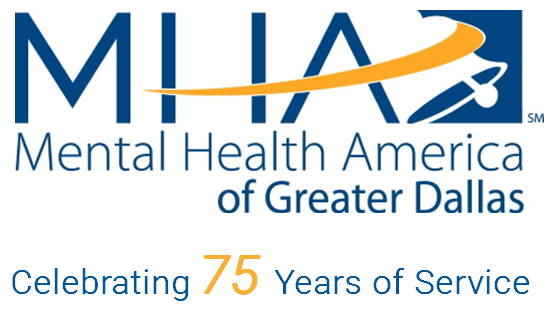
About MHA Screening
Since 2014, Mental Health America (MHA) Screening has provided mental health screenings online to over 20 million users worldwide, supporting over 5 million users annually since 2021. Part of the mission of the MHA online screening program is to further data-driven, upstream, population-level efforts to improve mental health. Our goal is to use screening data to rapidly analyze and disseminate information to help fill unmet needs and gaps in care for our communities. We analyze data based on correlations between screens and results, demographic questions, special populations, geography, special needs, and access to care.
This report was developed to provide community-level findings from MHA Screening data from 2018-2022 in Dallas, Texas, and discuss potential policy and programming opportunities to address mental health needs locally and at the state level. Based on these findings, this report provides recommendations for investment in three areas:
- Strengthening mental health services for youth and young adults, including expansion of educational programming.
- Implementation of readily-accessible crisis services, including 988 funding.
- Mental health workforce development and training, including recognizing signs and symptoms of burnout and promoting career development.
Project Overview
The following report contains self-reported, de-identified data that was collected from 2018-2022. Analyses were conducted using screening results from users who reported living in ZIP codes in the Dallas-Fort Worth metroplex. In some cases, ZIP codes may include areas across multiple counties.
Figure 1: Number of People Scoring with Mild to Severe Depression per 10K People in Dallas-Fort Worth by Zip Code (2018-2022)
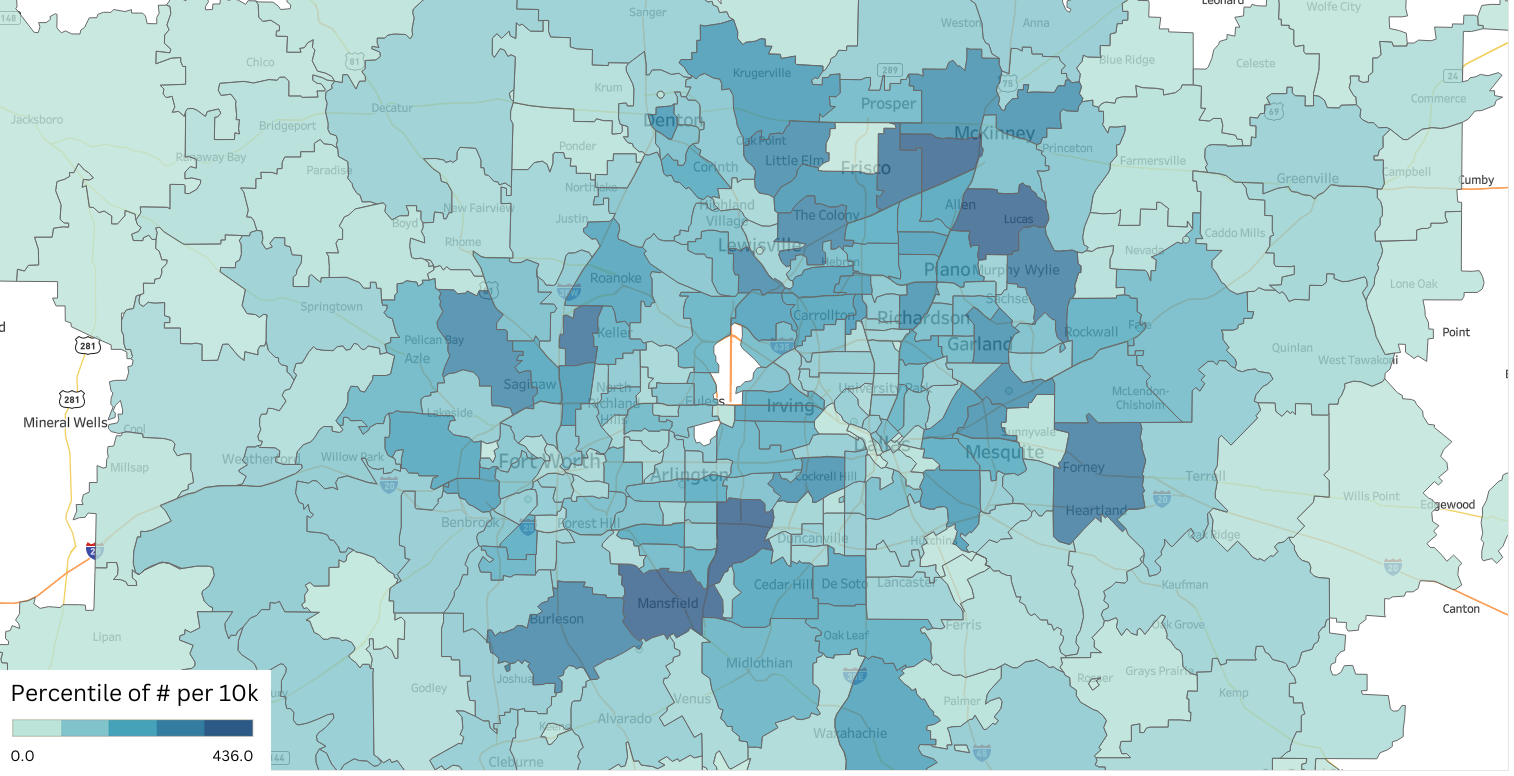
Figure 1: Map of the number of people scoring with mild to severe depression on MHA Screening per 1,000 people in the ZIP code population within Dallas-Fort Worth between 2020- 2022. Figure 1 maps the number of people scoring with mild to severe depression on the Patient Health Questionnaire 9-item (PHQ-9) depression screen per 10,000 people in the ZIP code. Dark blue ZIP codes are those with the highest number of people scoring with mild to severe depression per 1,000 people in the population. Light blue ZIP codes are those with the lowest number of people scoring with mild to severe depression per 1,000 people in the population.
Figure 2: Number of People Scoring with Mild to Severe Depression in Dallas-Fort Worth Over Time (2019-2022)
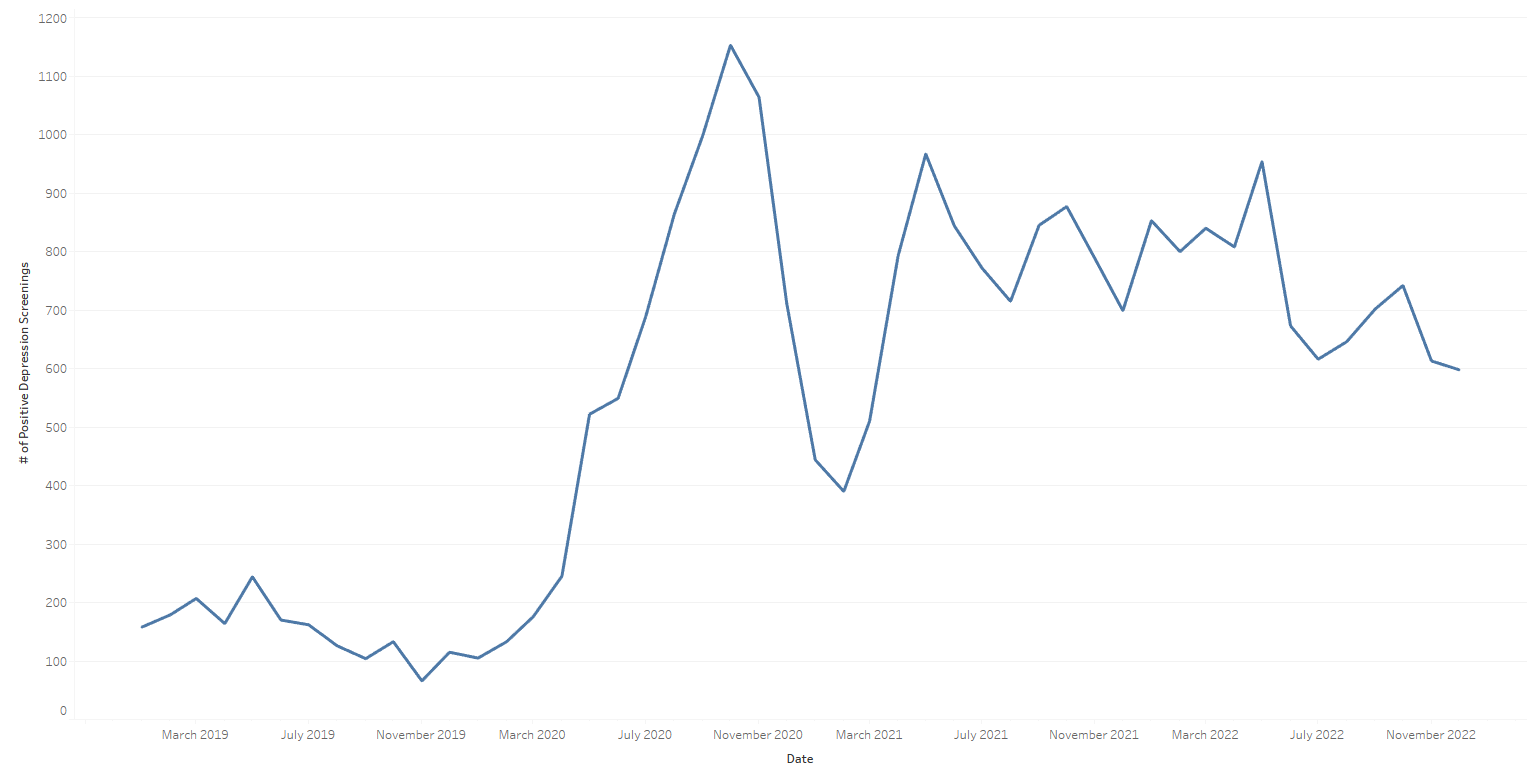
Figure 2: Graph of the number of Dallas adults scoring with mild to severe depression on MHA Screening by month between 2018 - 2022.
Depression Findings Discussion
Figure 2 reveals a noticeable increase in depression rates during the initial months, reaching a peak around November 2020. However, in the subsequent months after this peak, there was a significant decline in rates of depression. This decline could be attributed to various factors, including updated COVID-19 mandates, or improved awareness and access to mental health services.
Furthermore, the analysis of Figure 2 identifies certain periodic fluctuations within shorter time frames, suggesting the possibility of seasonal or cyclical influences on depression rates. These variations warrant further investigation to better understand their underlying causes and devise targeted strategies to address potential triggers.
As demonstrated by Figure 4, depression was prevalent in communities on both sides of the economic spectrum, but rates of mild to severe depression were skewed toward communities with lower household incomes. Of the 20 ZIP codes with the highest rates of mild to severe depression per 10,000 people, nine (45%) were ZIP codes where more than half of depression screeners reported a household income of less than $63,079, the median income in the Dallas-Fort Worth metroplex.
Of the 20 ZIP codes with the highest rates of mild to severe depression per 100,000 people, eleven (55%) were ZIP codes where more than half of depression screeners were white.
Figure 3: Top 20 ZIP Codes with Highest Number of People with Mild to Severe Depression per 10K (2020-2022)
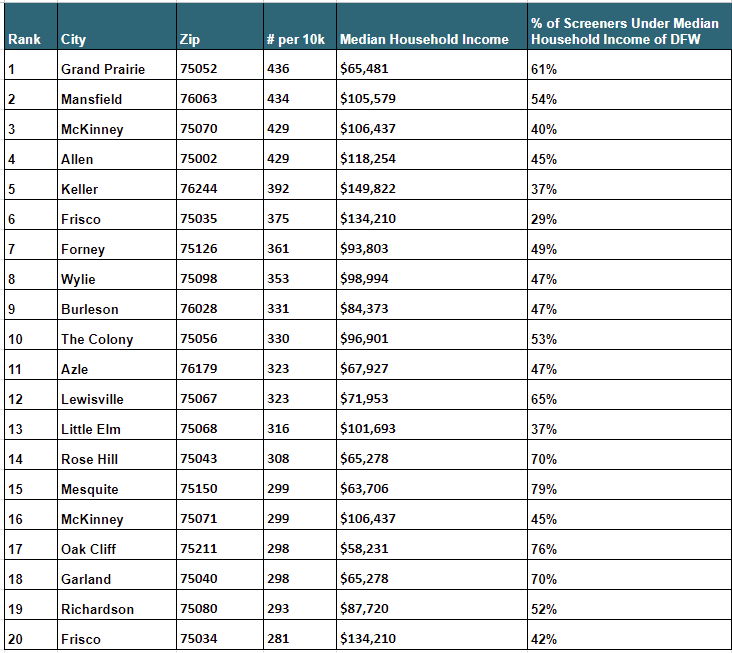
Figure 3: Table of 20 ZIP codes with the highest number of people scoring with mild to severe depression on MHA Screening per 100,000 people in the ZIP code population within Dallas-Fort Worth between 2020-2022. Figure 3 also references the median household income per zip code. Additionally, Figure 3 demonstrates the percent of screeners scoring with mild-to-severe symptoms of depression who made less than the median household income of Dallas-Fort Worth ($63,079).
Figure 4: Distribution of Household Income and Race/Ethnicity of Screeners with Mild to Severe Depression (2018-2022)
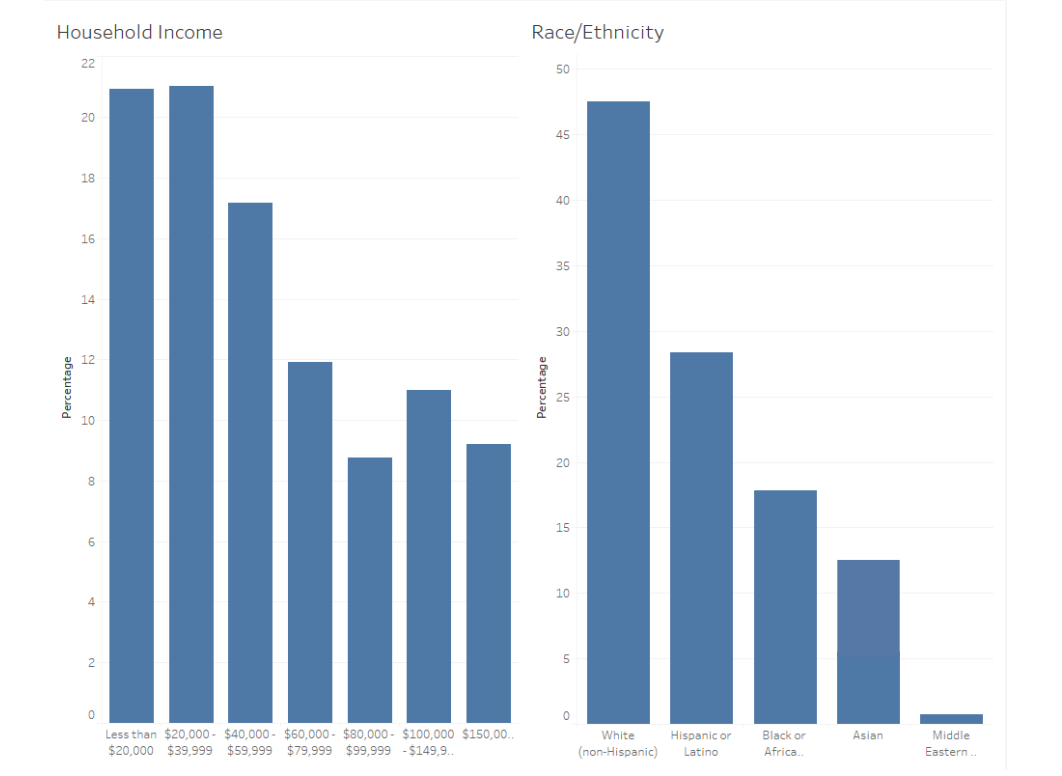
Figure 4: Table of the ethnicity and income distribution of Dallas adults scoring with mild to severe depression on MHA Screening between 2018 - 2022.
Data-Driven Change for Dallas-Fort Worth
From 2020-2022, Congress passed several bills allocating significant funding that states can use for mental health promotion and services, including the American Rescue Plan Act (ARPA) and Bipartisan Safer Communities Act (BSCA) (Mental Health America National). Given this increase in available funding and the findings from the MHA Screening program, Dallas-Fort Worth should invest in improvements in three areas.
- Strengthening services for youth and young adults
- Implementation of crisis services and 988 funding
- Mental health workforce development and training
The data from the Dallas Depression report can help ensure that populations in the most need of crisis services are being served. The analysis indicates a need to explore the availability of sufficient crisis services in Dallas neighborhoods in need, like Grand Prarie, Mansfield, Allen, and Mckinney.
The full continuum of crisis care must be developed to meet the needs of children, adolescents, and families, including access to youth crisis stabilization services and youth respite, full family crisis supports and in-home services, and family and youth peer support. Communities of color and other historically underserved communities should also be involved in the design, implementation, and quality measurement of crisis services and specific resources should be allocated for collaboration with local community-based organizations, youth-serving organizations, and representatives and trusted institutions within underserved communities.
About MHA of Greater Dallas
MHA of Greater Dallas conducts K-12 educational campaigns and community outreach programs to raise awareness about mental health issues, reduce stigma, and promote mental wellness. MHA provides resources and information to help individuals and families better understand mental health conditions and available support. MHA’s We Help Ourselves (WHO) program is an empowerment program designed for public and private school-age children. The WHO program empowers youths to learn the skills to advocate for themselves, stay safe and happy, and make good decisions based on knowledge and a strong internal value system.
MHA of Greater Dallas also offers peer support programs where individuals with lived experience of mental health challenges provide encouragement, empathy, and practical guidance to their peers. These programs create a safe space for individuals to share their experiences, seek support, and foster a sense of community.
Acknowledgements
Reinert, M. Lucas, K., Nguyen, T., Heyrman, M. & Connor, R. (April 2023). “MHA Screening: A Local Approach in Cook County, Illinois.”Mental Health America, Alexandria, VA
https://screening.mhanational.org/screening-tools/?ref=MHADallas
U.S. Census Bureau (2022). Population Estimates, July 1, 2022, Income and Poverty. Retrieved from https://www.census.gov/quickfacts/fact/table/dallascitytexas,fortworthcitytexas/
